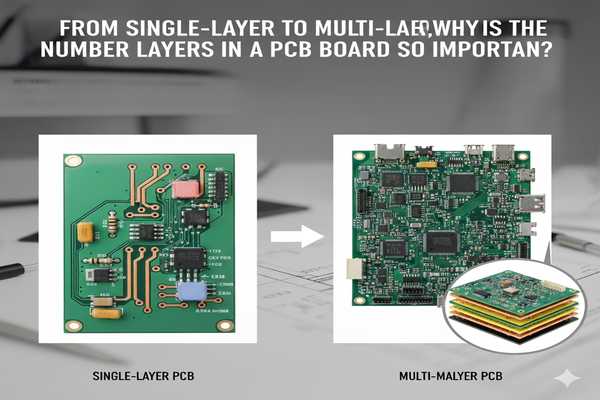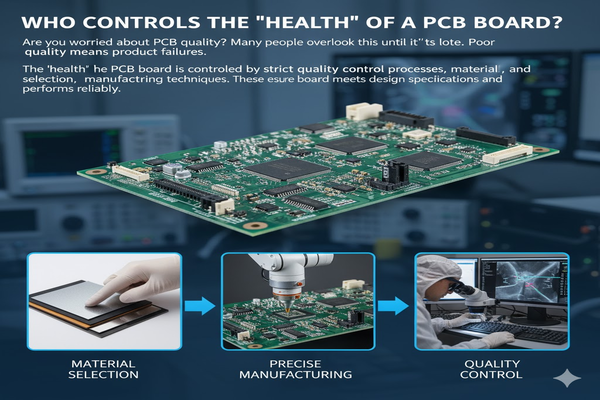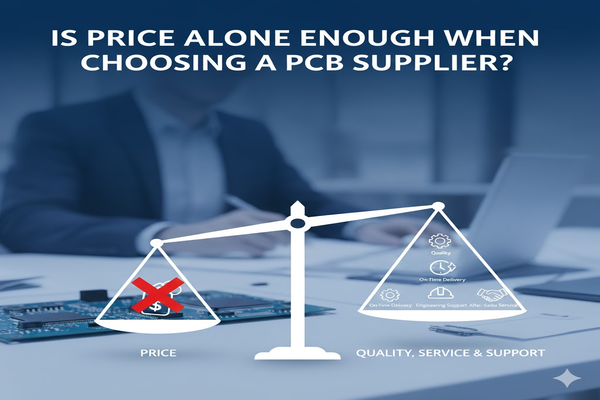Are you confused by PCB boards? Many people are. Not knowing the details can cause big problems. Let's fix that.
A PCB board1 is the backbone of almost all modern electronics. Understanding its details, from layer count2 to quality control, helps ensure your products work perfectly and last longer.
I used to think a PCB was just a green board with some lines. But it's so much more. Let's explore what makes a PCB tick and why these details matter for your projects.
From single-layer to multi-layer, why is the number of layers in a PCB board so important?
Do you wonder why some PCBs have many layers and others only one? This choice impacts performance. Get it wrong and your device might fail.
The number of layers in a PCB directly affects its complexity, signal integrity3, and ability to handle power. More layers mean more design flexibility for complex circuits and better electrical performance.

When I first started designing circuits, I thought more layers just meant more cost. But I learned that layers solve real problems. Imagine trying to fit a complex city onto a single road versus a multi-level highway system. The latter handles more traffic, faster, and with fewer accidents. PCBs are similar. More layers allow for dedicated ground and power planes, reduce electromagnetic interference (EMI)4, and enable shorter, cleaner signal paths, which are critical for high-speed applications5. Choosing the right number of layers is a balance between performance needs and manufacturing cost.
Layer Types and Their Purpose
| Layer Type | Primary Function | Typical Use Case |
|---|---|---|
| Single-Layer | Basic circuit connectivity | Simple consumer electronics, LED lighting |
| Double-Layer | Increased routing area, some signal isolation | Power supplies, audio amplifiers |
| Multi-Layer | Complex routing, EMI reduction, power/ground planes | Computers, smartphones, advanced sensors |
Signal Integrity and Layer Count
High-speed signals need controlled impedance. More layers make it easier to create these controlled impedance traces. This means less signal loss and better data transmission, which is crucial for things like USB 3.0 or PCIe. Without enough layers, signals bounce around, causing errors.
Who controls the "health" of a PCB board?
Are you worried about PCB quality? Many people overlook this until it's too late. Poor quality means product failures.
The "health" of a PCB board is controlled by strict quality control processes, material selection, and precise manufacturing techniques. These ensure the board meets design specifications and performs reliably.

I once received a batch of PCBs that looked fine but failed quickly in testing. It turned out the vendor cut corners on material quality and inspection. This cost my team a lot of time and money. It taught me that trusting a supplier's quality control is non-negotiable. Every step, from raw material inspection to final functional testing, contributes to a PCB's "health." Without rigorous checks, even a slight defect can lead to a complete system failure. This includes checks on copper thickness6, solder mask adhesion, and drill accuracy.
Key Quality Control Steps
- Incoming Material Inspection: Checking raw FR-4, copper foil, and solder mask for defects.
- In-Process Inspection: Monitoring etching, drilling, plating, and lamination stages for accuracy.
- Automated Optical Inspection (AOI): Detecting short circuits, open circuits, and missing features.
- Electrical Test: Confirming continuity and isolation for every net on the board.
- Final Inspection: Visual checks for cosmetic defects and dimensional accuracy.
Material Choices Impact Health
The type of laminate material, like FR-4, affects electrical performance and thermal management. A board for a high-temperature environment needs different materials than one for a standard consumer device. Using the wrong material shortens the board's life.
Is price alone enough when choosing a PCB supplier?
Do you think price is the only thing that matters for a PCB supplier? Many companies make this mistake. This can lead to costly problems later.
No, price alone is not enough. Other vital factors include quality, on-time delivery, clear communication, engineering support7, and reliable after-sales service8 to ensure project success and product reliability.

Early in my career, I always picked the cheapest supplier. I learned the hard way that a low price often hides big compromises. I ended up with late deliveries, boards that didn't work, and no one to call for help. It caused project delays and financial losses. I realized that a good supplier is a partner. They offer more than just a product; they offer support, reliability, and peace of mind. For my European and American clients, these non-price factors are often the most important. A strong warranty and responsive support can save a project. South-electronic gives a 5-year warranty and lifetime support, which is a huge benefit.
Factors Beyond Price
| Factor | Why It Matters | Impact on Project |
|---|---|---|
| Quality | Ensures boards function as designed, reduces failures, extends product life. | Prevents costly re-spins, callbacks, and reputation damage. |
| On-Time Delivery | Critical for meeting production schedules and market launch dates. | Avoids production delays, missed opportunities. |
| Communication | Clear, timely exchange of information prevents misunderstandings and errors. | Streamlines design process, resolves issues quickly. |
| Engineering Support | Technical assistance during design and manufacturing phases. | Optimizes designs, avoids manufacturing pitfalls. |
| After-Sales Service | Warranty, troubleshooting, and replacement policies. | Provides security, resolves post-delivery issues. |
The True Cost of a Cheap PCB
A cheap PCB that fails means more than just replacing the board. It can mean lost production time, damage to your brand, and customer dissatisfaction. Investing in a reliable supplier actually saves money in the long run.
Conclusion
Understanding PCB details, from layers to supplier choices, ensures your electronics are robust and reliable. Prioritize quality and support over just price.
Explore this link to gain a comprehensive understanding of PCB boards and their significance in electronics. ↩
Learn about the critical role of layer count in PCB design and how it affects performance. ↩
Discover the importance of signal integrity in PCB design and how it impacts data transmission. ↩
Understand how EMI can impact PCB performance and ways to mitigate its effects. ↩
Explore the requirements and challenges of designing PCBs for high-speed applications. ↩
Learn about the significance of copper thickness in ensuring optimal PCB functionality. ↩
Learn how engineering support can optimize PCB designs and prevent manufacturing issues. ↩
Understand how after-sales service contributes to customer satisfaction and project success. ↩



